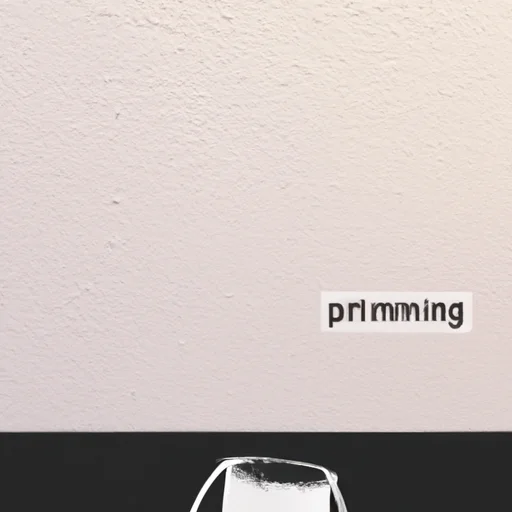In the quest for a flawless and impeccable paint finish, the question arises: does a paint sprayer deliver the smoothness we desire? Painting enthusiasts and professionals alike have often pondered over this very topic, striving to uncover the truth behind the effectiveness and desirability of paint sprayers. Today, we aim to shed light on this intriguing question, exploring the pros and cons of using a paint sprayer to achieve that beautifully even and sleek coat of paint. So, let us embark on this journey of discovery together and unravel the mysteries surrounding the smooth finish provided by paint sprayers.
Does A Paint Sprayer Give A Smooth Finish
Table of Contents

Advantages of Using a Paint Sprayer
Efficiency and Time-saving
When it comes to painting large surfaces or completing multiple painting projects, using a paint sprayer offers great efficiency and time-saving benefits. Unlike manual painting with brushes or rollers, a paint sprayer allows for quick and even application of paint, covering larger areas in a fraction of the time. This is especially advantageous for professionals or homeowners who need to complete painting tasks efficiently and are looking to save valuable time.
Consistent Application
One of the key advantages of using a paint sprayer is the ability to achieve a consistent application of paint. With brushes or rollers, it can be challenging to maintain a uniform coat of paint, resulting in uneven finishes and streaks. However, paint sprayers ensure a consistent and even distribution of paint, resulting in a smooth and professional-looking finish.
Smooth Finish
Achieving a smooth finish is often a top priority when painting surfaces. Paint sprayers excel at delivering a smooth and flawless finish due to the fine mist of paint particles they produce. Unlike brushes or rollers that can leave behind visible brush strokes or roller marks, a paint sprayer provides a smoother and more even coverage, resulting in a seamless and aesthetically pleasing finish.
Even Coverage
Uneven coverage can be a common issue when using brushes or rollers for painting. However, with a paint sprayer, achieving even coverage becomes much easier. The fine mist of paint produced by a sprayer allows for better control over the distribution of paint, ensuring that every inch of the surface receives a consistent and thorough coating. This eliminates the need for multiple coats, saving both time and money.
Ability to Reach Difficult Areas
One of the biggest advantages of using a paint sprayer is its ability to reach difficult areas that are otherwise hard to paint. Whether it’s intricate corners, detailed trim, or surfaces with irregular textures, a paint sprayer can effortlessly reach and coat these areas effectively. This makes it an invaluable tool for painting projects that involve complex surfaces or hard-to-reach spots, ensuring a uniform and professional-looking finish.
Factors Affecting the Smoothness of Finish
Paint Quality
The quality of the paint being used plays a significant role in determining the smoothness of the finish. Opting for high-quality paints that are specifically designed for spray applications can greatly improve the overall result. These paints are formulated to achieve optimal flow and leveling, resulting in a smoother finish. Using cheap or low-quality paints can lead to issues like clogging in the sprayer or an uneven application, ultimately affecting the smoothness of the finish.
Sprayer Type
The type of paint sprayer being used also affects the smoothness of the finish. There are various types of paint sprayers available, including airless, HVLP, and compressed air spray guns. Each type has its own way of atomizing and delivering paint, which can impact the final result. Understanding the differences between these sprayer types and choosing the one that suits the specific painting project can help ensure a smoother finish.
Technique and Experience
The technique and experience of the painter can heavily influence the smoothness of the finish. Using a paint sprayer requires a certain level of skill and practice to achieve optimal results. Factors such as the angle of the sprayer, the distance from the surface, and the speed of movement all come into play. With practice, painters can develop their technique and achieve a smoother finish with a paint sprayer.
Surface Preparation
Proper surface preparation is crucial for achieving a smooth finish when using a paint sprayer. The surface should be clean, dry, and free of any dust, dirt, or imperfections. Any loose paint, rust, or rough patches should be sanded or repaired before painting. By ensuring a smooth and properly prepared surface, the paint sprayer can work at its best, resulting in a flawless finish.
Environmental Conditions
Environmental conditions, such as temperature and humidity, can affect the smoothness of the finish when using a paint sprayer. It is important to follow the paint manufacturer’s instructions regarding the suitable temperature and humidity range for application. Extreme temperatures or high humidity can cause the paint to dry too quickly or not adhere properly, resulting in a less smooth finish. Ideal environmental conditions help the paint to flow and level properly, ensuring a smooth and professional-looking outcome.
Choosing the Right Paint Sprayer for a Smooth Finish
Airless Paint Sprayers
Airless paint sprayers are known for their high-pressure, paint-pumping mechanism. They are capable of delivering a large volume of paint quickly, making them ideal for covering large surfaces in a short amount of time. Airless sprayers can provide a smooth finish, especially when used with high-quality paints and proper technique. However, they require some skill and control to prevent overspray and ensure an even application.
HVLP Paint Sprayers
HVLP (High-Volume Low-Pressure) paint sprayers operate at a lower pressure compared to airless sprayers. This results in less overspray and a finer atomization of the paint, which can contribute to a smoother finish. HVLP sprayers are particularly suitable for woodworking projects, furniture refinishing, and other applications that demand precision and control. They are also more beginner-friendly, making them a good choice for those new to paint sprayers.
Compressed Air Spray Guns
Compressed air spray guns rely on compressed air to atomize and propel the paint onto the surface. They are commonly used in industrial settings and are capable of producing a smooth finish. However, they require a compressor to supply the necessary air pressure and are often more complex to operate compared to airless or HVLP sprayers. Compressed air spray guns are best suited for experienced painters who have the necessary equipment and expertise.
Best Practices for Achieving a Smooth Finish
Choosing the Right Nozzle Size
The nozzle size of the paint sprayer plays a crucial role in achieving a smooth finish. Different nozzle sizes are designed for specific types of paint and applications. Using the wrong nozzle size can result in uneven coverage or overspray. It is important to consult the paint manufacturer’s guidelines to determine the appropriate nozzle size for the specific paint being used. Choosing the right nozzle size ensures optimal atomization and a smoother finish.
Proper Paint Dilution
Proper paint dilution is essential for achieving a smooth finish with a paint sprayer. Each paint product has specific instructions regarding the ideal consistency for spraying. Diluting the paint according to these guidelines helps it flow smoothly through the sprayer, resulting in a consistent application and a smoother finish. Using too much or too little dilution can lead to issues like clogging, splattering, or an uneven finish.
Consistent Speed and Distance
Maintaining a consistent speed and distance while using a paint sprayer is key to achieving a smooth finish. Moving too quickly or too slowly, or varying the distance from the surface, can result in an uneven application or overspray. It is important to practice maintaining a steady speed and maintaining a consistent distance to ensure an even and smooth coat of paint.
Overlap and Crosshatch Technique
When using a paint sprayer, employing the overlap and crosshatch technique can help achieve a more uniform and smooth finish. Overlapping each pass of the sprayer by about 50% ensures even coverage and minimizes any visible lines or streaks. Additionally, using a crosshatch pattern (applying a second coat perpendicular to the first) can help further blend the paint and create a seamless finish.
Avoiding Drips and Runs
Drips and runs can mar the smoothness of the finish when using a paint sprayer. To avoid this, it is important to maintain the right pressure and avoid excessive paint buildup on the surface. Starting and stopping the sprayer away from the surface can also prevent drips. Proper technique and experience contribute to minimizing the chances of drips and runs and help achieve a smoother, flawless finish.
Tips for Preparing the Surface
Cleaning and Sanding
Properly cleaning and sanding the surface before painting is crucial for achieving a smooth finish. Remove any dirt, grease, or loose paint from the surface using a mild detergent or a degreaser. Sand any rough areas or imperfections to create a smooth and even base for the paint. By ensuring a clean and properly prepared surface, the paint sprayer can work at its best and help achieve a flawless finish.
Repairing Imperfections
Repairing any imperfections on the surface is essential for a smooth finish. Fill in any cracks, holes, or dents using an appropriate filler or putty. Sand down the repaired areas to make them flush with the rest of the surface. By addressing these imperfections beforehand, the paint sprayer can provide a uniform coating, resulting in a smoother and more professional-looking finish.
Priming the Surface
Applying a primer before painting can significantly contribute to a smooth finish. Primers help create a uniform surface, seal any porous areas, and provide better adhesion for the paint. They also help minimize the chances of uneven absorption of the paint, resulting in a more even and smooth finish. Choosing a primer that is compatible with the paint being used ensures optimal results.
Common Mistakes that Ruin a Smooth Finish
Not Straining the Paint
Many painters overlook the importance of straining their paint before using a sprayer, leading to clogs and a poor finish. Straining the paint helps remove debris, lumps, and clumps, ensuring a smooth flow through the sprayer. Using a paint strainer or a mesh filter before pouring the paint into the sprayer can eliminate any impurities that could affect the quality of the finish.
Incorrect Pressure or Air Flow
Using incorrect pressure or air flow settings can result in an uneven application and affect the smoothness of the finish. It is important to follow the manufacturer’s instructions and set the sprayer to the recommended pressure for the specific paint being used. Adjusting the pressure or air flow based on the requirements of the painting project can prevent issues like overspray or insufficient coverage, ensuring a smoother finish.
Painting in Extreme Temperatures
Painting in extreme temperatures can negatively impact the smoothness of the finish. Extremely high or low temperatures can cause the paint to dry too quickly or not adhere properly, resulting in an uneven or rough finish. It is important to choose suitable weather conditions for painting, ensuring that the temperature falls within the recommended range specified by the paint manufacturer.
Inadequate Surface Protection
Neglecting to protect surrounding surfaces can lead to unwanted overspray, drips, or stains that can ruin a smooth finish. Before using a paint sprayer, it is crucial to cover and mask off areas that are not intended to be painted. Drop cloths, masking tape, and plastic sheets can be used to protect floors, furniture, windows, and other adjacent surfaces, preserving the smoothness and cleanliness of the finish.
Insufficient Drying Time
Rushing the drying time can result in a subpar finish. It is important to allow sufficient drying time between coats and before handling the painted surface. Rushing the process can lead to smudges, fingerprints, or damage to the freshly painted surface. Patience is key to achieving a smooth finish, so make sure to follow the recommended drying times provided by the paint manufacturer.
Tools and Equipment for a Smooth Finish
Paint Sprayer
A high-quality paint sprayer is essential for achieving a smooth finish. Look for sprayers that offer adjustable pressure settings, different nozzle sizes, and features that promote even and controlled application. Investing in a reliable and reputable brand can make a significant difference in the smoothness and quality of the finish.
Paint Filters
Paint filters are an important accessory when using a paint sprayer. They help remove impurities, clumps, and debris from the paint, ensuring a smooth and clog-free spraying experience. Paint filters come in various mesh sizes, allowing you to choose the appropriate filter based on the thickness of the paint.
Drop Cloths and Masking Tape
Drop cloths and masking tape are essential for protecting surrounding areas from overspray and drips. Covering floors, furniture, and other surfaces with drop cloths helps maintain cleanliness and prevents any accidental damage. Masking tape can be used to create clean lines and edges, ensuring a professional-looking finish.
Safety Gear
Safety should always be a priority when using a paint sprayer. Wear appropriate safety gear such as goggles, gloves, and a respirator to protect against any potential hazards, including airborne paint particles or fumes. Following safety guidelines and using protective equipment helps ensure a smooth painting process and a safe working environment.
Maintaining Your Paint Sprayer for a Smooth Finish
Cleaning and Flushing
Regular cleaning and flushing of the paint sprayer are essential for maintaining its performance and achieving a smooth finish. After each use, thoroughly clean the sprayer by flushing it with the appropriate cleaning solution or mineral spirits, following the manufacturer’s instructions. This removes any paint residue or debris that could clog the sprayer and affect the quality of future finishes.
Proper Storage
Proper storage of the paint sprayer is crucial for its longevity and optimal performance. After cleaning, ensure that all detachable parts are dried thoroughly to prevent rust or damage. Store the sprayer in a clean, dry, and protected area, away from extreme temperatures or moisture. Following the manufacturer’s guidelines for storage helps prolong the life of the sprayer and ensures it is ready for future use.
Regular Inspections and Maintenance
Performing regular inspections and maintenance on your paint sprayer is important for identifying any potential issues and keeping it in optimal working condition. Check for any signs of wear, clogs, or damage, and address them promptly. Lubricate any moving parts as per the manufacturer’s recommendations. Regular maintenance ensures that the sprayer continues to deliver consistent and smooth finishes for years to come.
Conclusion
Using a paint sprayer offers numerous advantages when aiming for a smooth finish. Its efficiency and time-saving capabilities make it invaluable for both professionals and homeowners with multiple painting projects. The consistent application and smooth finish achieved with a paint sprayer surpass the often uneven results achieved with brushes or rollers. By selecting the right sprayer, following best practices, and preparing the surface properly, a smooth and flawless finish can be easily achieved. Remember to choose the appropriate type of sprayer, practice proper technique, and invest in high-quality paints and tools. With the right approach and a little bit of practice, anyone can enjoy the benefits of a smooth finish with a paint sprayer.

Upgrade Your Painting Game
Explore our Introduction To The Best Paint Sprayers guide to take your projects to the next level!







